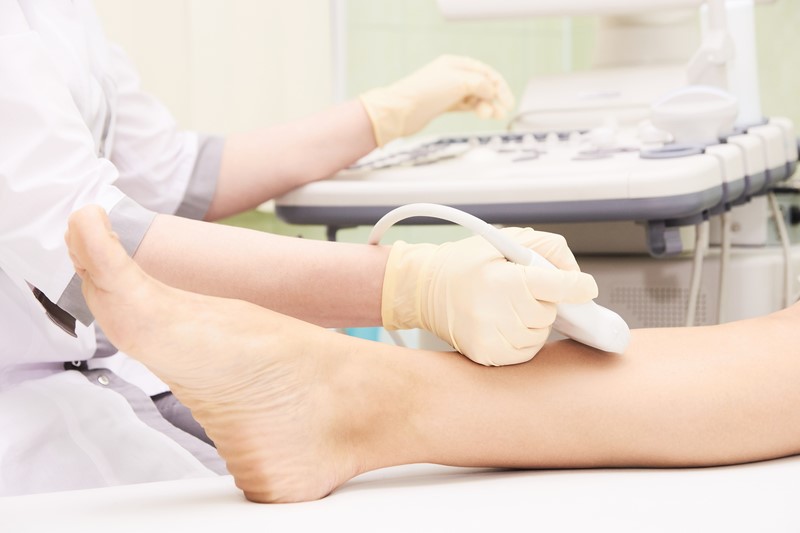During a leg vein appointment at Geelong Veins Skin & Laser, your doctor will use ultrasound to assess your leg veins. What is the ultrasound looking at? And why do we use ultrasound?
Ultrasound is used extensively in medical imaging, perhaps the most common use that comes to mind is for pregnancy (to look at the growing fetus). Ultrasound uses high-frequency sound waves (so high you cannot hear them) that pass through the bodies tissues and bounce off different tissue types in varying ways, thus creating a picture on the computer screen. Ultrasound waves are not harmful.
Duplex ultrasound is a particular type of ultrasound that also measures the flow of blood in different directions.
To assess leg veins properly it is important to have an ultrasound scan to check if your deeper veins are working correctly, returning blood back to the heart as they should. Duplex ultrasound can show (with colours or sound) which direction the blood is flowing in your legs. Blood should flow toward the heart, and be prevented from any backflow towards the feet by small valves in the veins. If the valves in a vein are not working correctly there will be refluxing blood heading in the wrong direction towards your feet, into varicose veins. A mapping ultrasound will determine which veins (if any) have this backflow, and which veins are working correctly, returning the blood to your heart. Your doctor may squeeze your calf or press on certain varicose veins to exaggerate the flow of blood while assessing these veins.
This information is important when planning treatment of varicose and spider veins. If you have larger, deeper veins with refluxing blood, these need to be addressed with deeper ultrasound guided injections, before the surface veins can effectively be treated.
All new patients (and existing patients who have not had one done for a while) have a leg vein ultrasound on their first consult at Geelong Veins Skin & Laser.
Organise a consult with Geelong Veins, Skin and Laser’s experienced leg vein doctors.
